Learn how you can Unlock Limitless Customer Lifetime Value with CleverTap’s All-in-One Customer Engagement Platform.
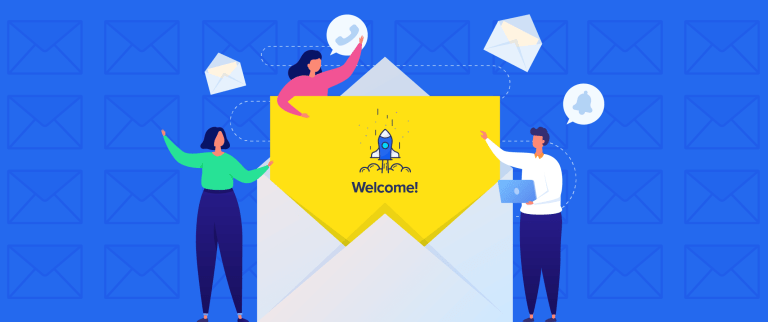
Downloads mean nothing if you can’t keep your users.
Mobile marketers get one shot to make a great first impression. You have an extremely narrow window to capture and keep a new user’s interest before they slip away forever — which makes your onboarding email campaign one of the most important tools in your user engagement arsenal.
With effective onboarding, you get higher retention rates, greater revenues, and up to a 500% increase in customer lifetime value.
Keep reading for onboarding email best practices, the anatomy of an effective welcome email sequence, plus onboarding welcome email examples.
With media-rich push notifications and SMS marketing taking off, it’s tempting to see email as an outdated channel. But email marketing is the tried-and-true tool that continues to deliver. Want proof? Open rates for onboarding welcome emails stand at a staggering 57.8%.*
So why is email so effective as a customer onboarding channel?
For one, it’s expected. Users who add their email address on your app anticipate a welcome email within a few minutes, so they’re primed to engage with your onboarding messages. Plus, their interest in your app is at a high point. They’re sold on your value prop (they signed up, after all) and are ready to explore your app.
Second, it’s an external channel. You can’t count on new users to take the initiative to open your app, which makes dropping reminders into their inbox an effective way to engage them and start building usage habits.

Onboarding Secrets from Today’s Top Mobile Apps
An effective welcome email increases engagement by 33% — and can generate 320% more revenue than regular emails.*
But to see that kind of ROI, you have to do onboarding emails right. How do you welcome a customer in an email? What should be in a welcome email?
What happens after the initial welcome email?
Effective onboarding takes more than a single message. You should have one set of emails to nurture active users, and a separate track to attract and engage inactive users.
Email Onboarding Flow: Welcome Email Template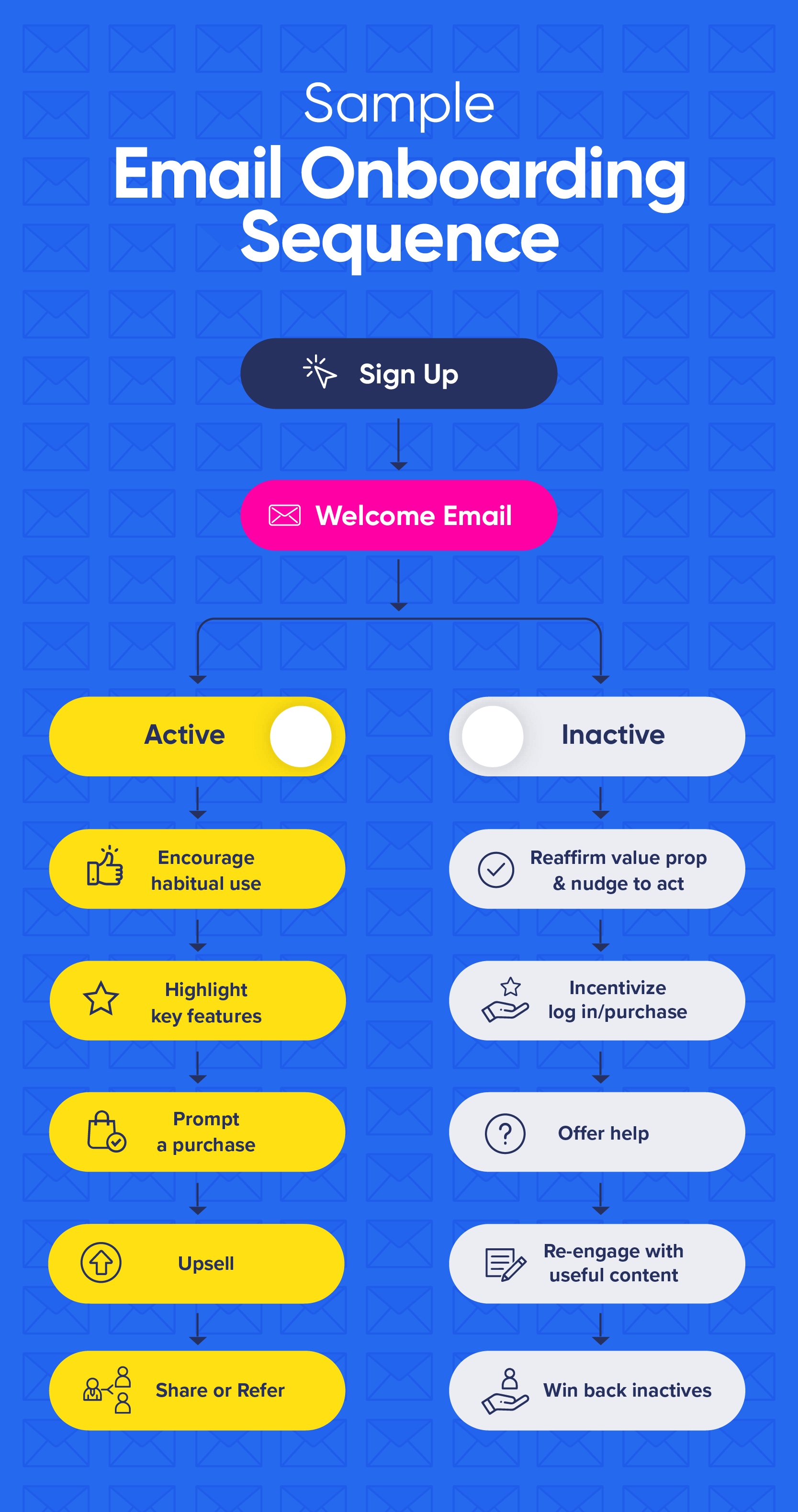
Popular guided meditation app Headspace has more than 65 million downloads and 2 million paying subscribers.*
One of their secrets to success is how well they convert new users into loyal customers. A key part of that is their email onboarding strategy. They’ve perfected their onboarding email flow to build new user habits, convert free users into paying subscribers, and build long-term engagement.
Headspace sends personalized welcome messages to new users within minutes of signing up on the app. Fun, quirky illustrations immediately engage the eye and let users know this isn’t some stuffy meditation app. Crisp copy focuses on the app’s key benefit: less stress and a happier life with just a few minutes of mindfulness. 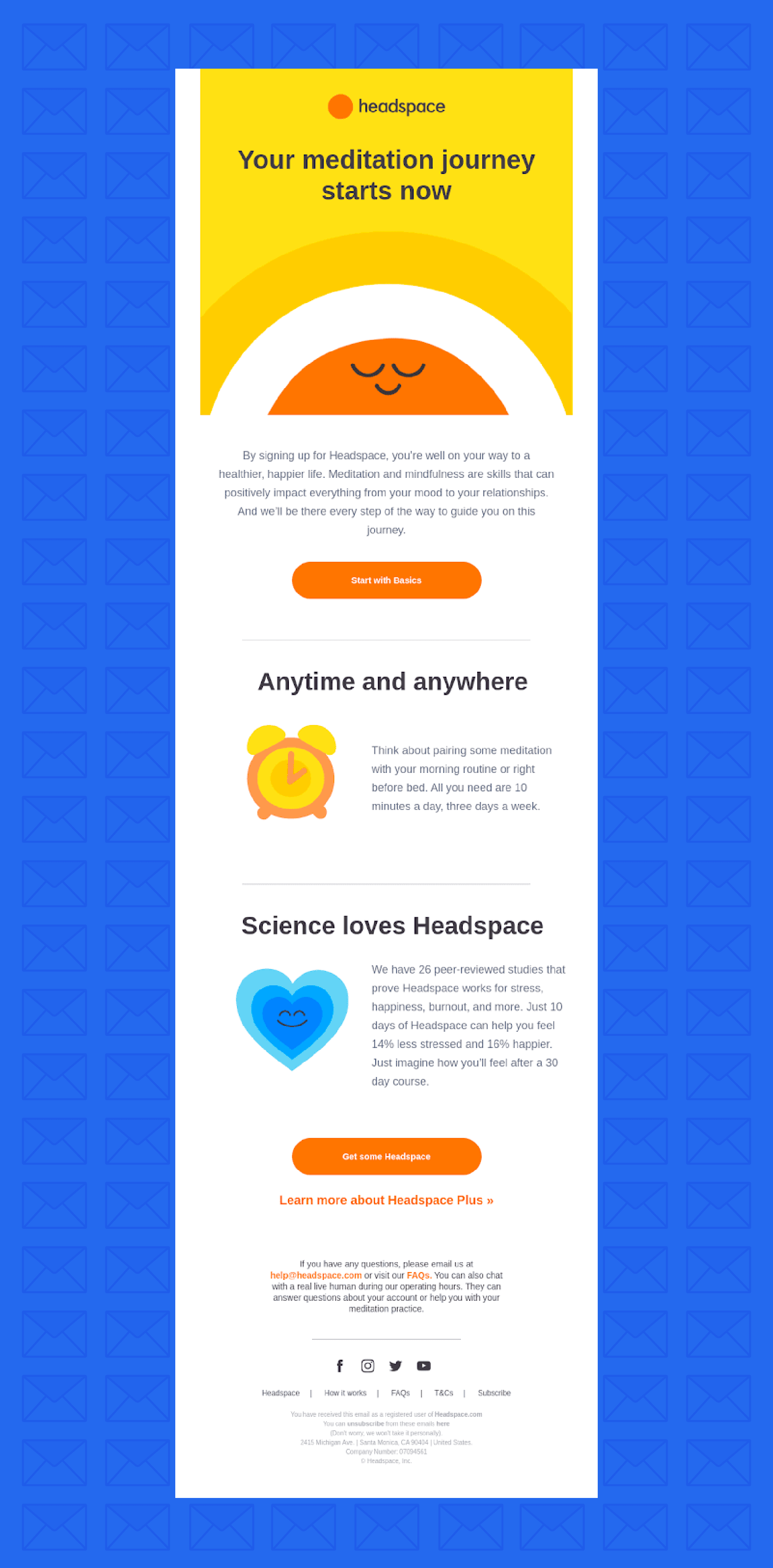
After the initial welcome message, Headspace tailors onboarding emails for both active and inactive users. This first flow focuses on leading active users farther down the customer path to build daily habits, purchase a subscription, and eventually become brand evangelists.
Depending on your app, this action could be trying out a central feature, conducting a search, consuming content, adding a friend, or creating a profile. In the case of Headspace, that key action is getting an active user to complete another meditation session and start building a daily habit.
Headspace cleverly sends a virtual high five to engaged users to build on their meditation streak, reinforce the benefits of daily practice, and foster a positive emotional connection with the company.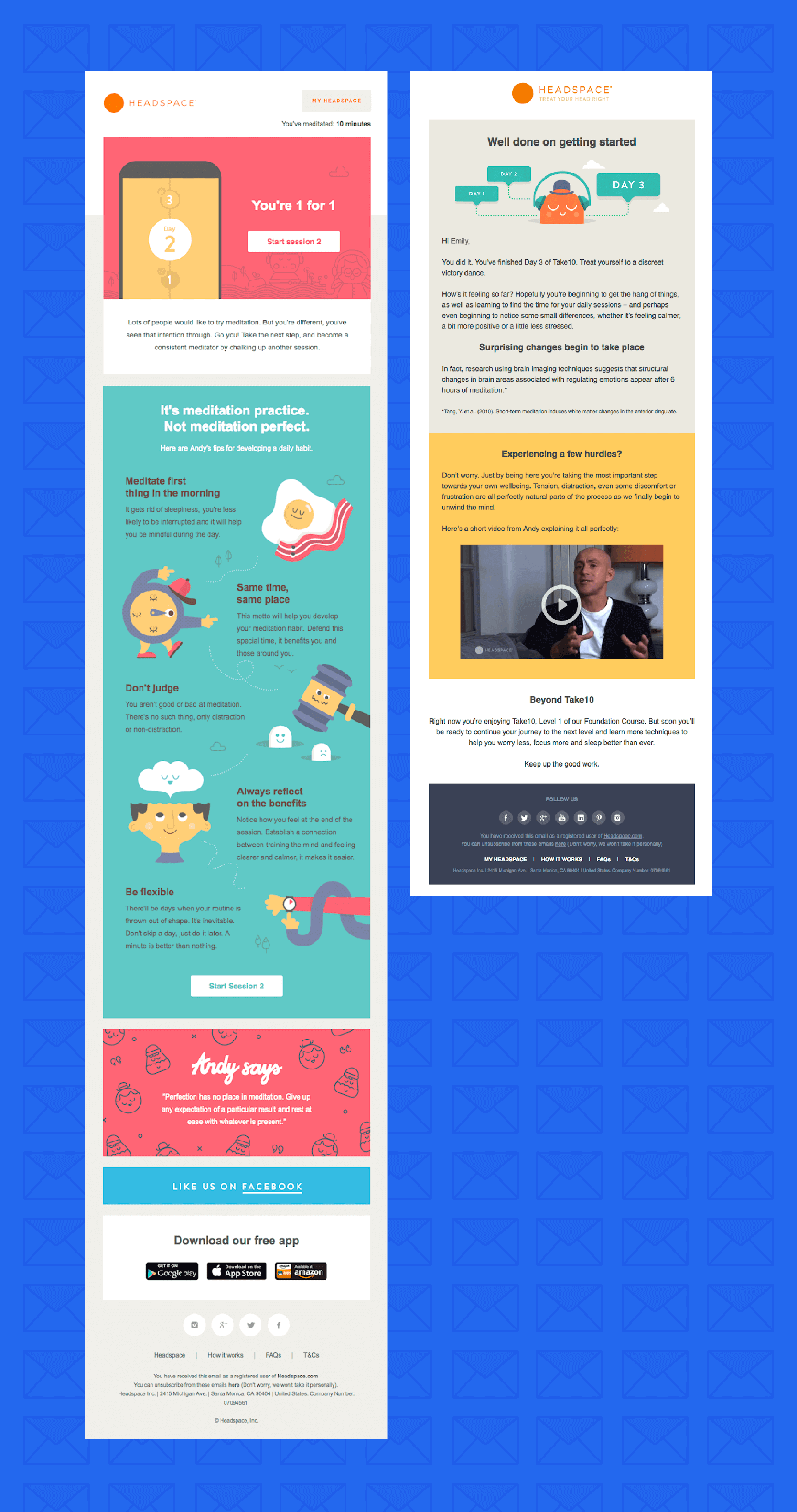
Help new users get to know the special features that set your app apart. The faster they get to experience how cool your app is, the more likely they are to get hooked on its benefits.
Headspace sends a specific email to spotlight its subscription-only Singles feature, a series of one-off meditations that focus on a single topic like sports training, feeling overwhelmed, and creative writing.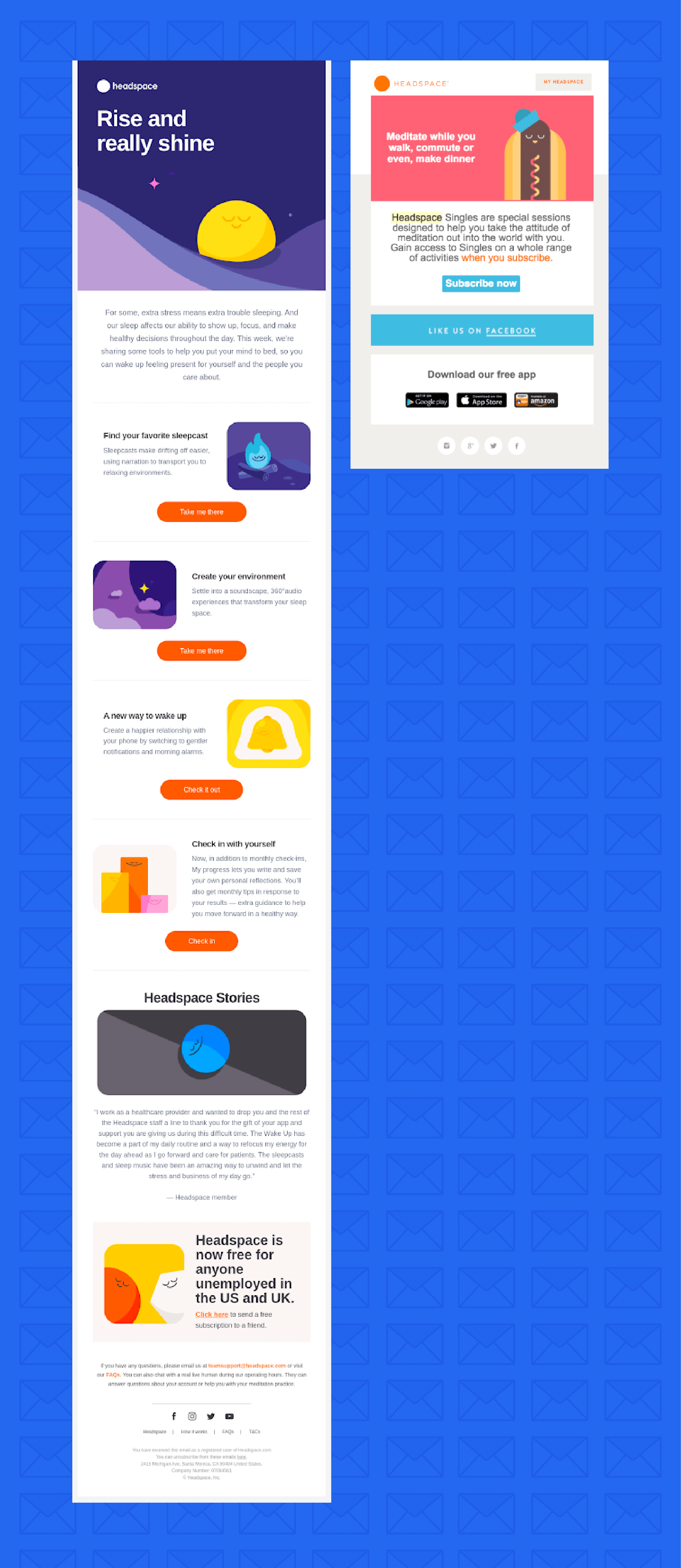
From ads and in-app purchases to subscriptions, deciding which monetization strategy is right for your app is an important business decision. But no matter which model you choose, knowing how and when to monetize new users can be tricky.
Like many apps, Headspace has an always-free plan (no trial that runs out). So they focus on monetizing currently active users by offering discounts on an annual subscription. This not only helps the company make money, but it also keeps Headspace users committed and engaged long-term.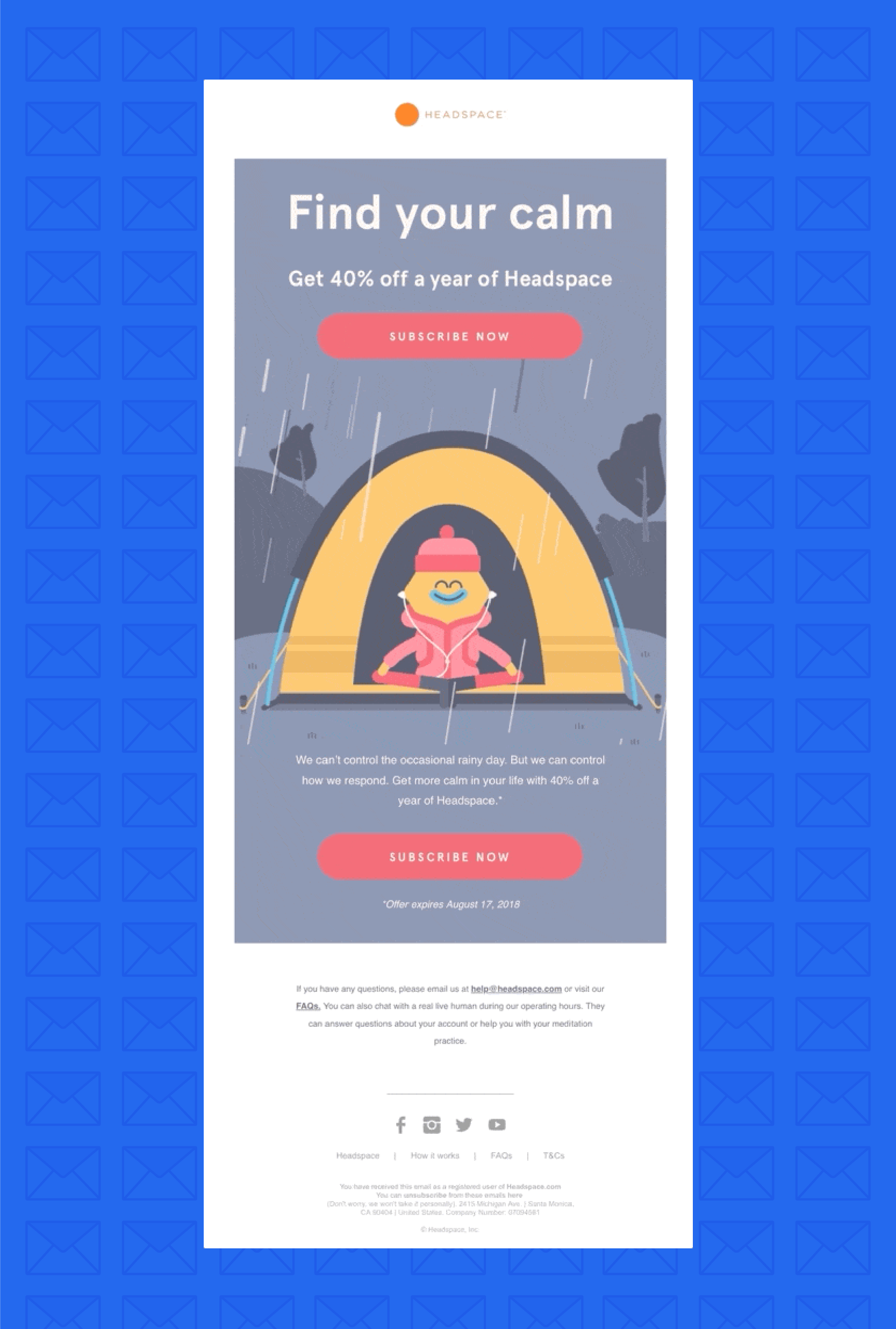
Upselling without being pushy can be tough to pull off. But by focusing your upsell strategies on the customers who will actually benefit from additional products or services, you can increase revenue and user satisfaction.
Headspace understands that many of its users are turning to the app to reduce stress and anxiety and improve their quality of life. And a big part of that is getting a good night’s sleep.
To help users get more value out of the app (and to upsell users who are already experiencing the benefits of their service), Headspace sends an email announcing free limited-time access to their sleep sounds and singles. 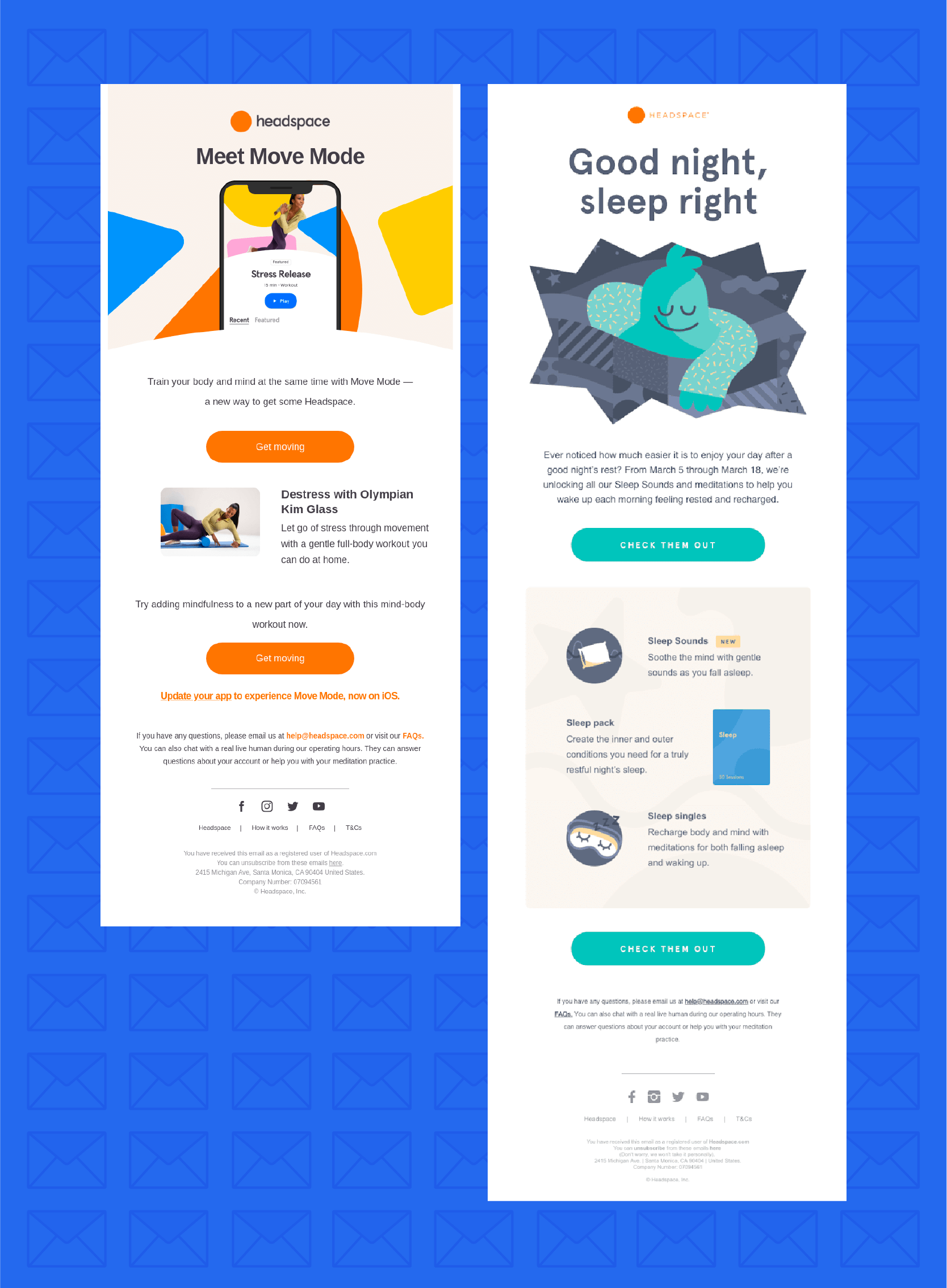
92% of people trust referrals from their friends.* Encouraging your champion users to spread the word can be a powerful way to grow your user base and provide compelling social proof to prospective users.
Headspace gives users who have a 30-day history of daily engagement a free month to share with a friend. And the line: “We all know someone who should treat their head right… right?” makes it sound like the user is really doing their friend a favor, not Headspace.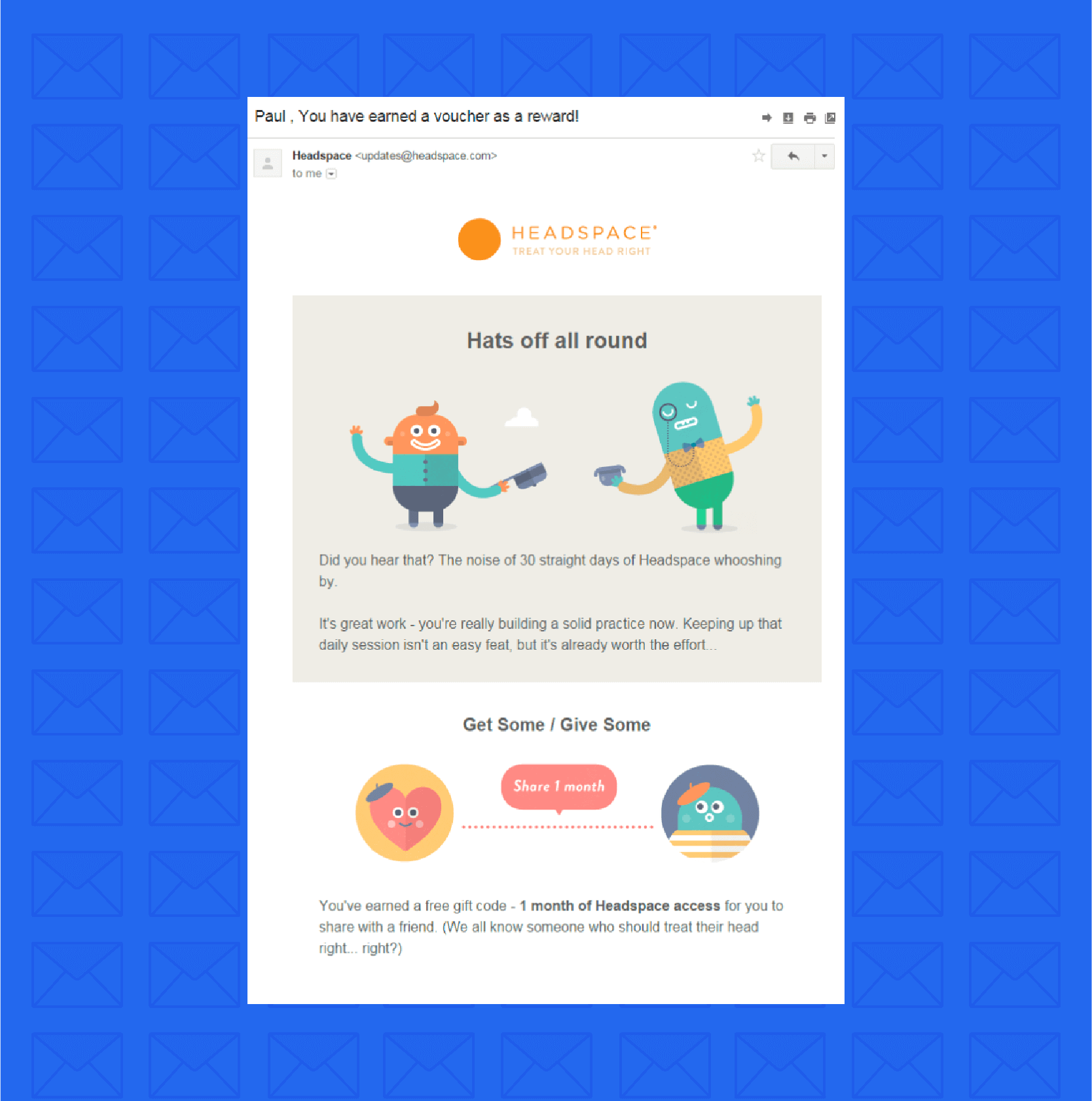
Not every new user is going to jump right in and engage with your app. In fact, most won’t. 24% of apps are only opened once.
Onboarding emails are an important tool to remind new users why they’re interested in your app, how it can improve their lives, and get them on track to become habitual users.
Headspace has a very clear understanding of its audience, and what gets in the way of their success: feeling intimidated by meditation, and not finding the time.
So they tailor onboarding emails for inactive new users to address these two specific issues. In the first the message is simple: meditation is really easy. The second emphasizes how little time it truly takes to reap the benefits.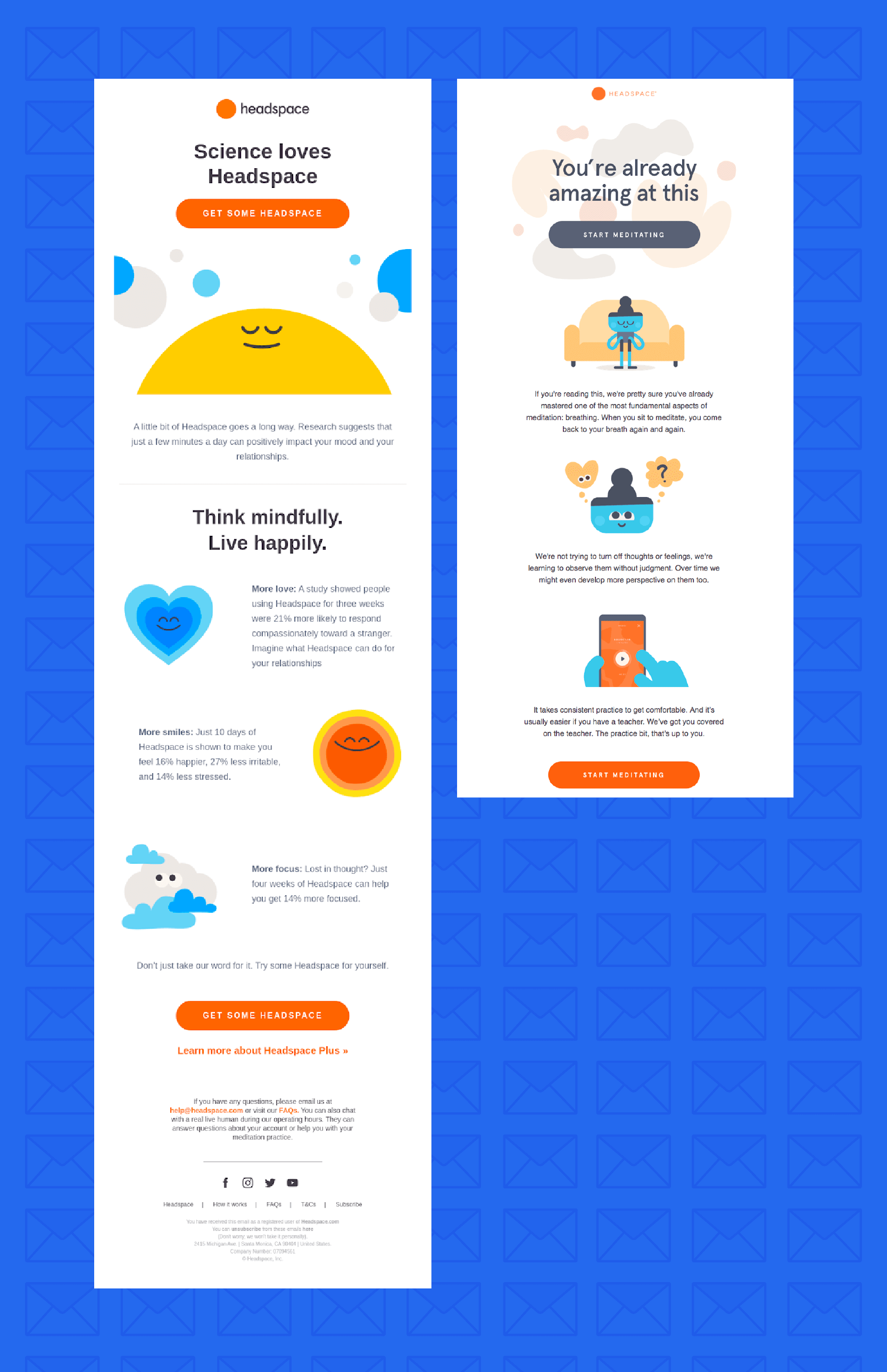
Headspace incentivizes subscription purchases, which makes sense for their business model of converting freemium users into paying subscribers. But sometimes the goal is simply to get inactive new users to open the app. To encourage inactive users to log in, Headspace could offer limited-time access to paid features like the Headspace Library or sleep sounds to encourage inactive users to explore the app and get hooked on premium features. 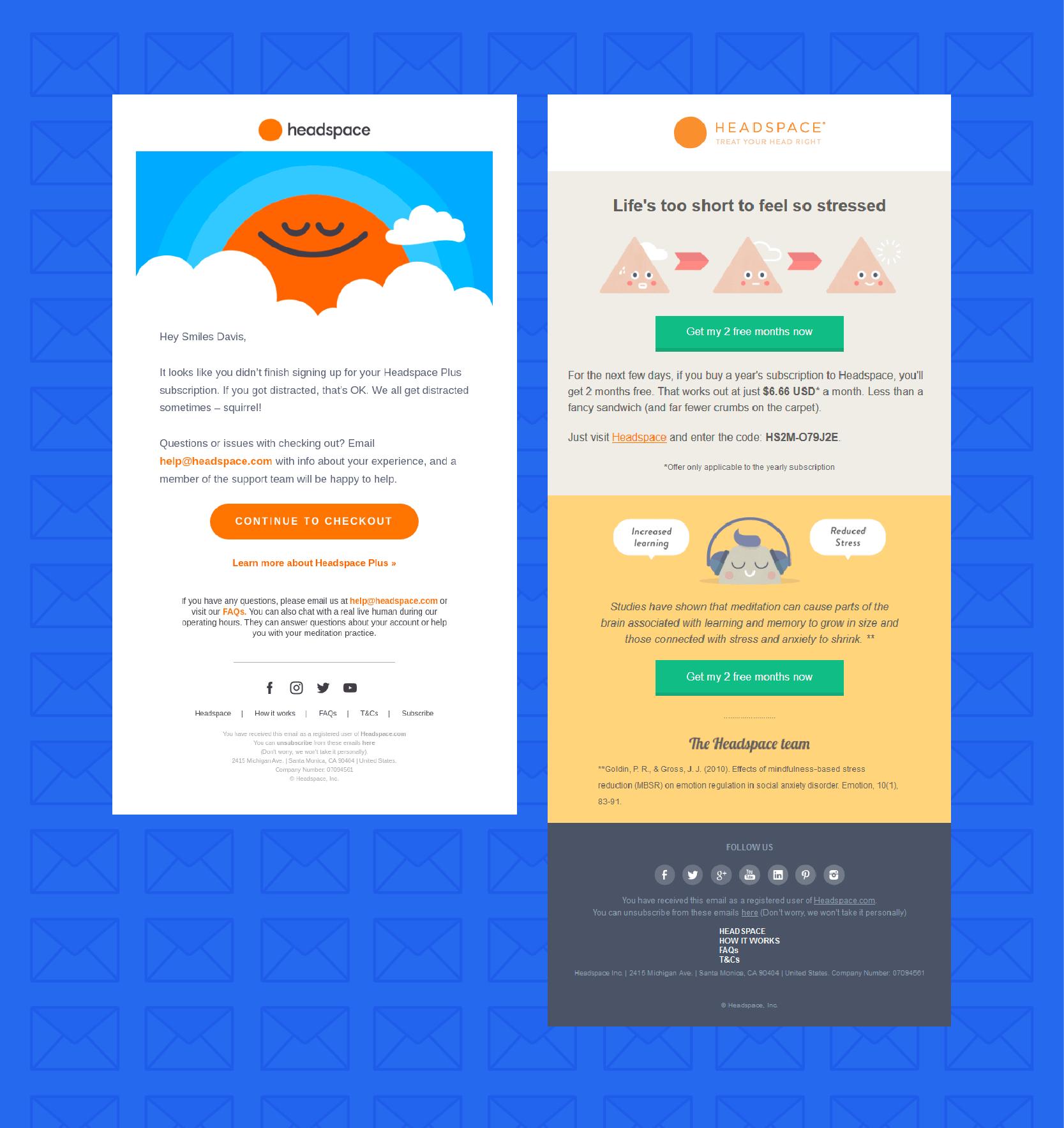
Whether it’s booking a trip, browsing for a new TV show to watch, or uploading a new photo, sometimes users just get stuck. They haven’t played around with your app enough to know how to find what they’re looking for, or they’re simply unaware of a feature or service you offer.
By offering help, quick tips, or reminders, you can help new users get value out of your app without taking the time to explore every feature. Sometimes, a simple word of encouragement, as Headspace provides below, is just as effective.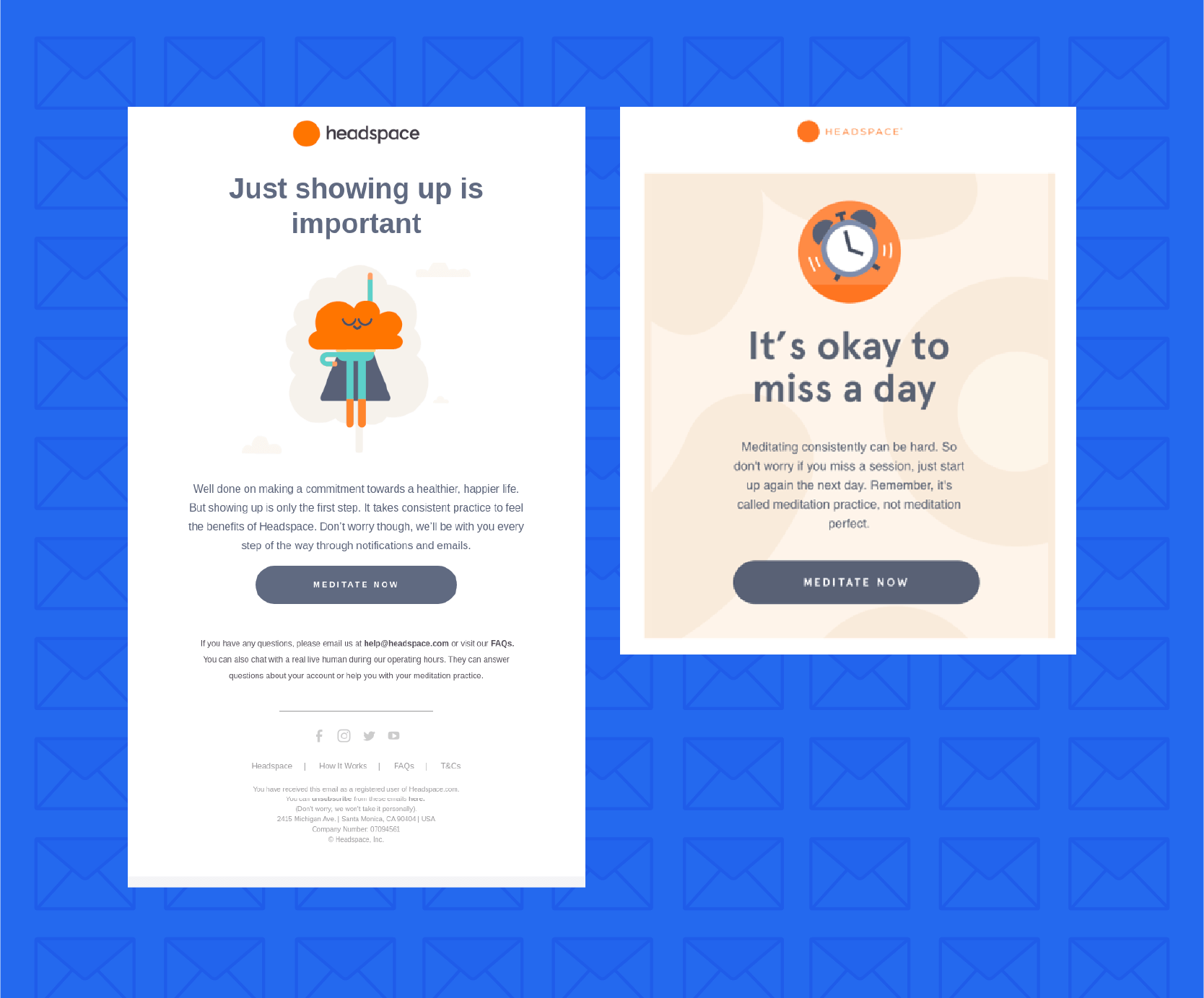
Done right, content marketing can be a powerful tool for user engagement. Sending inactive users a roundup of your most popular or latest blog posts, videos, and podcasts can show the value you provide to users and reignite their interest in your product. 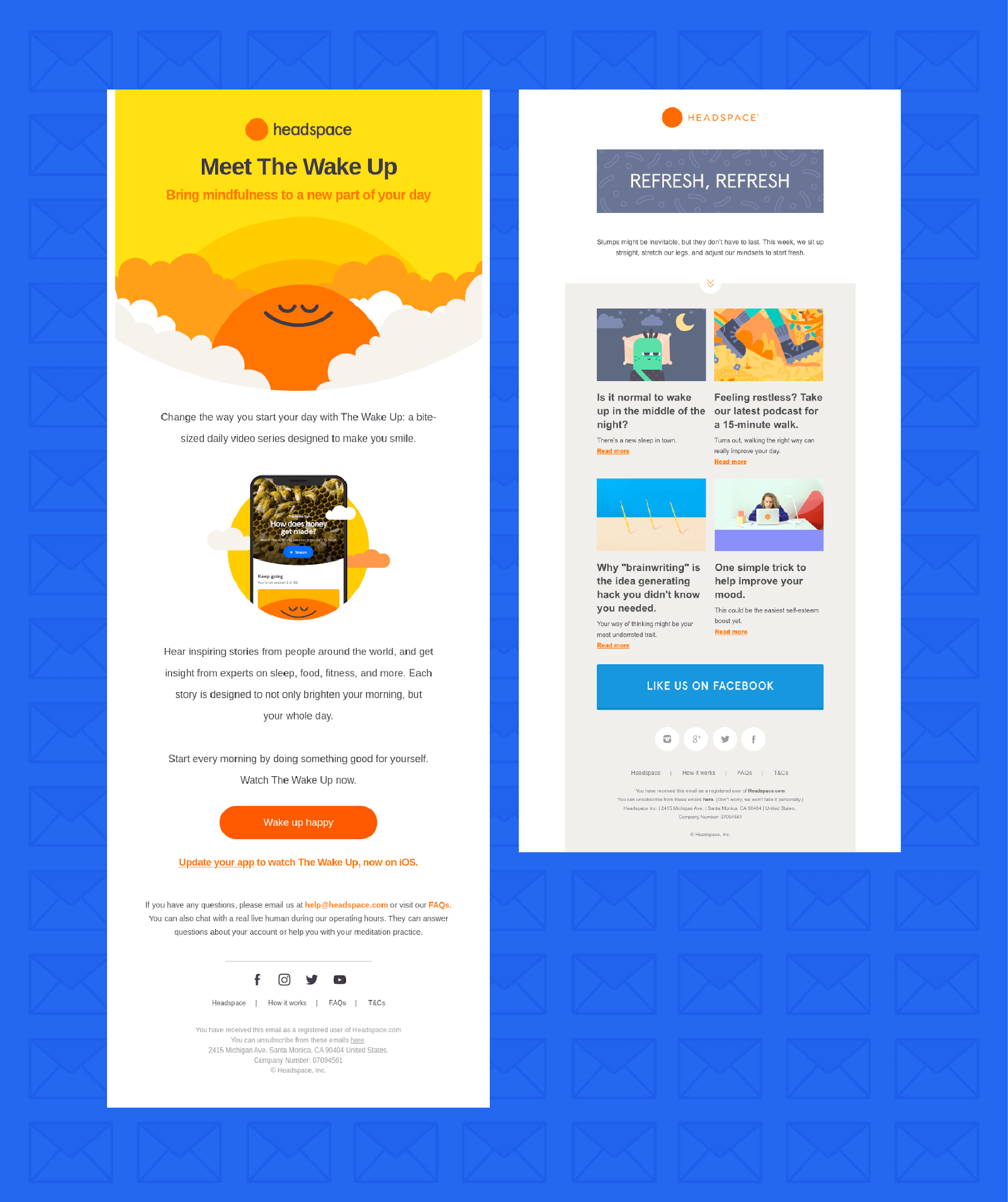
Deals and bonus offers are the #1 reason users say they return to an app after uninstalling.* Think of this email as your last-ditch attempt to get a new user to engage with your app. Most companies pull out all the stops and offer a really tempting discount or promotion to pique a dormant user’s interest.
This “Last Chance” email from Headspace offers a significant discount, creates a sense of urgency to act, and indicates to users that it will be the last time they hear from the company.
Once you’ve built your onboarding email flow, you’ll want to track performance. Here are three key metrics to keep an eye on so you can gauge your success:
Go beyond email to provide new customers with a seamless user experience on the optimal channel. Use Journeys to build sophisticated onboarding campaigns that automatically offer one path for active users who open a welcome email, and can send fallback messages via push or SMS to those who don’t.

See how today’s top brands use CleverTap to drive long-term growth and retention